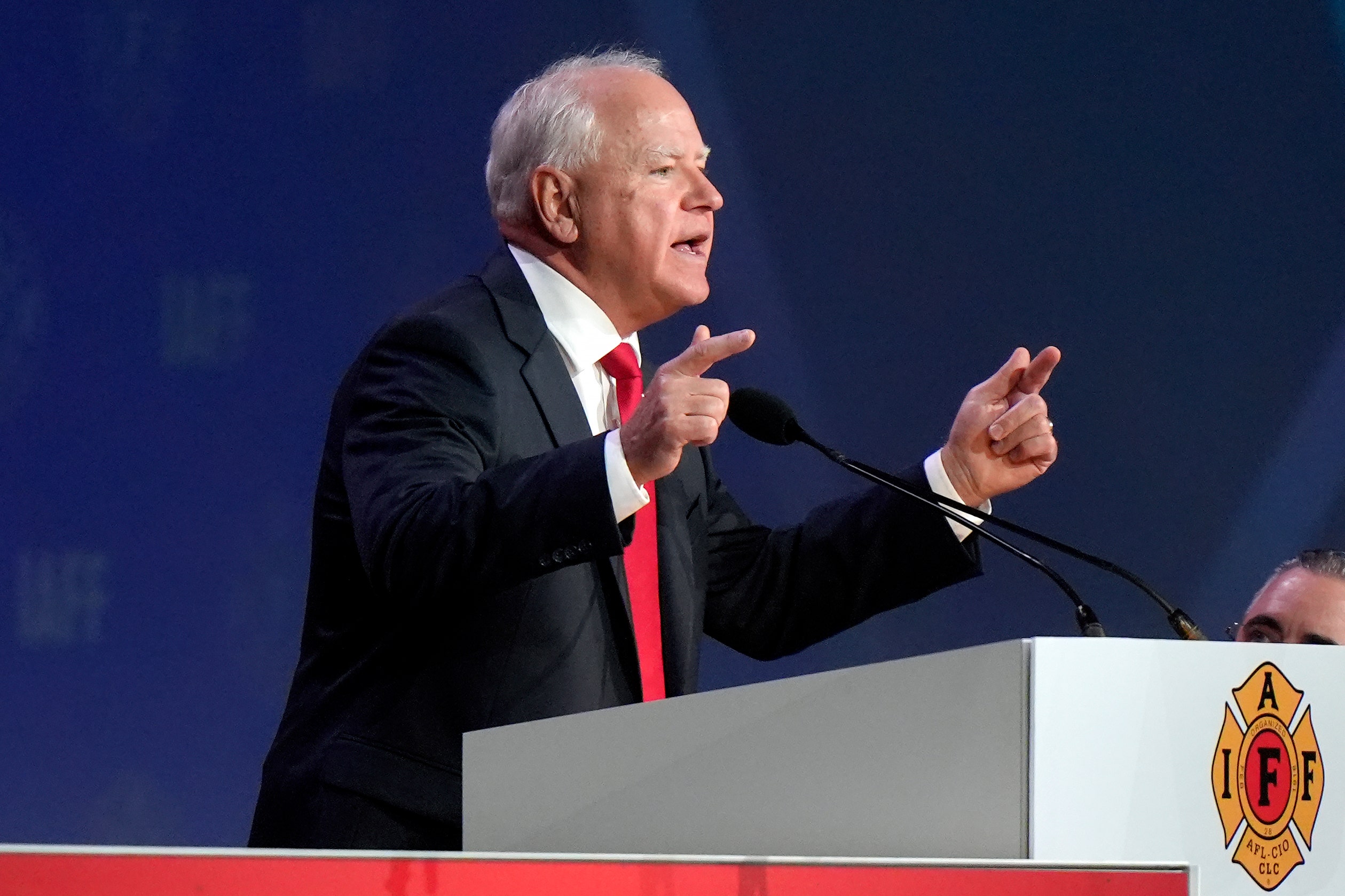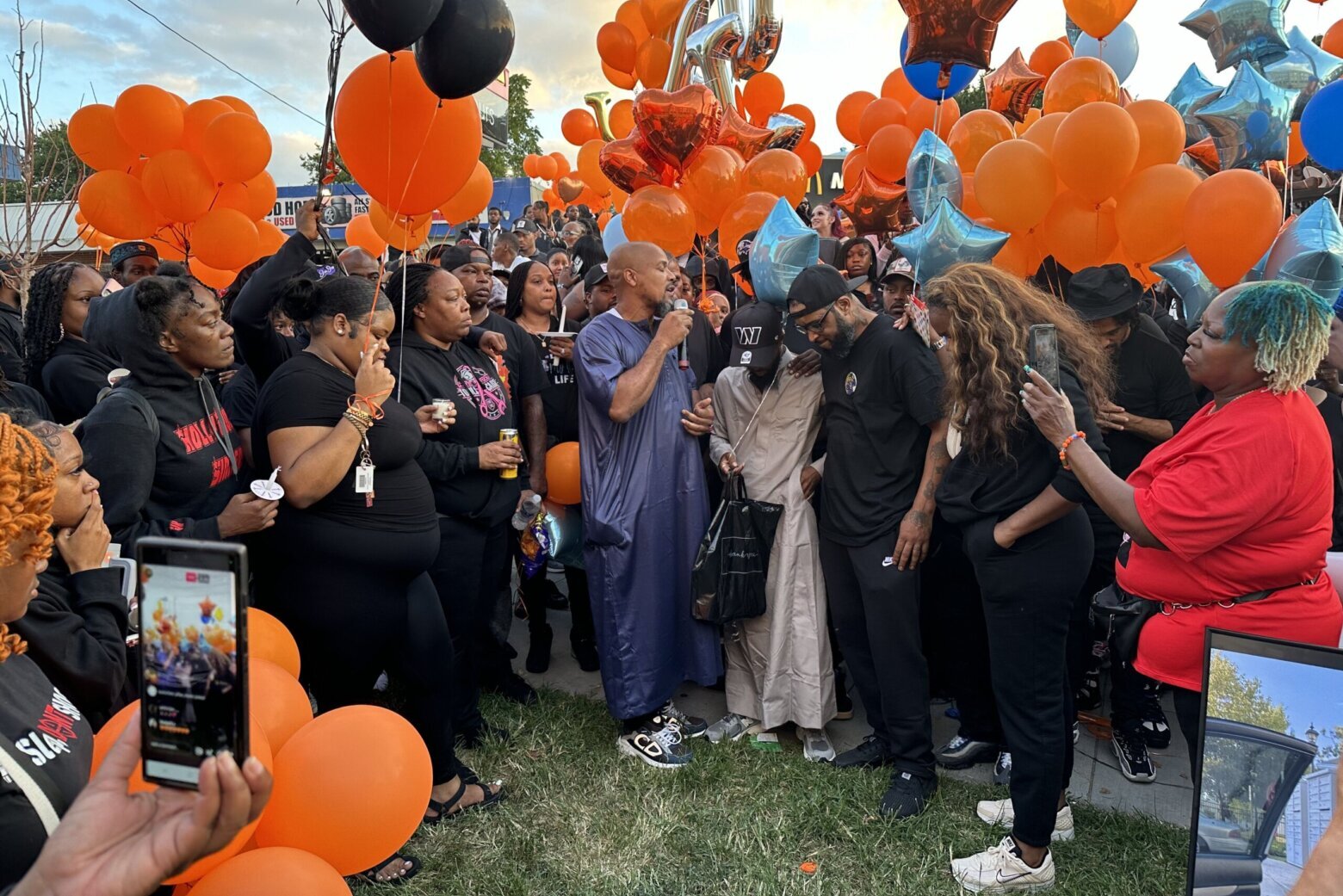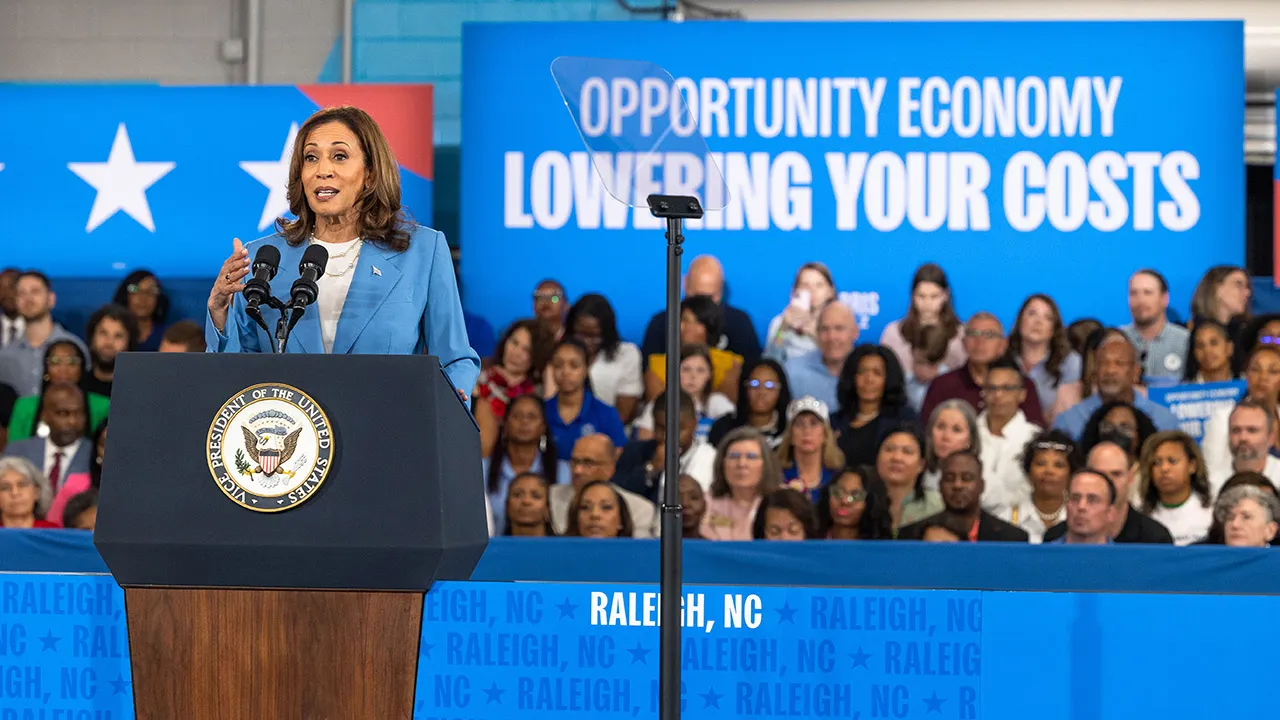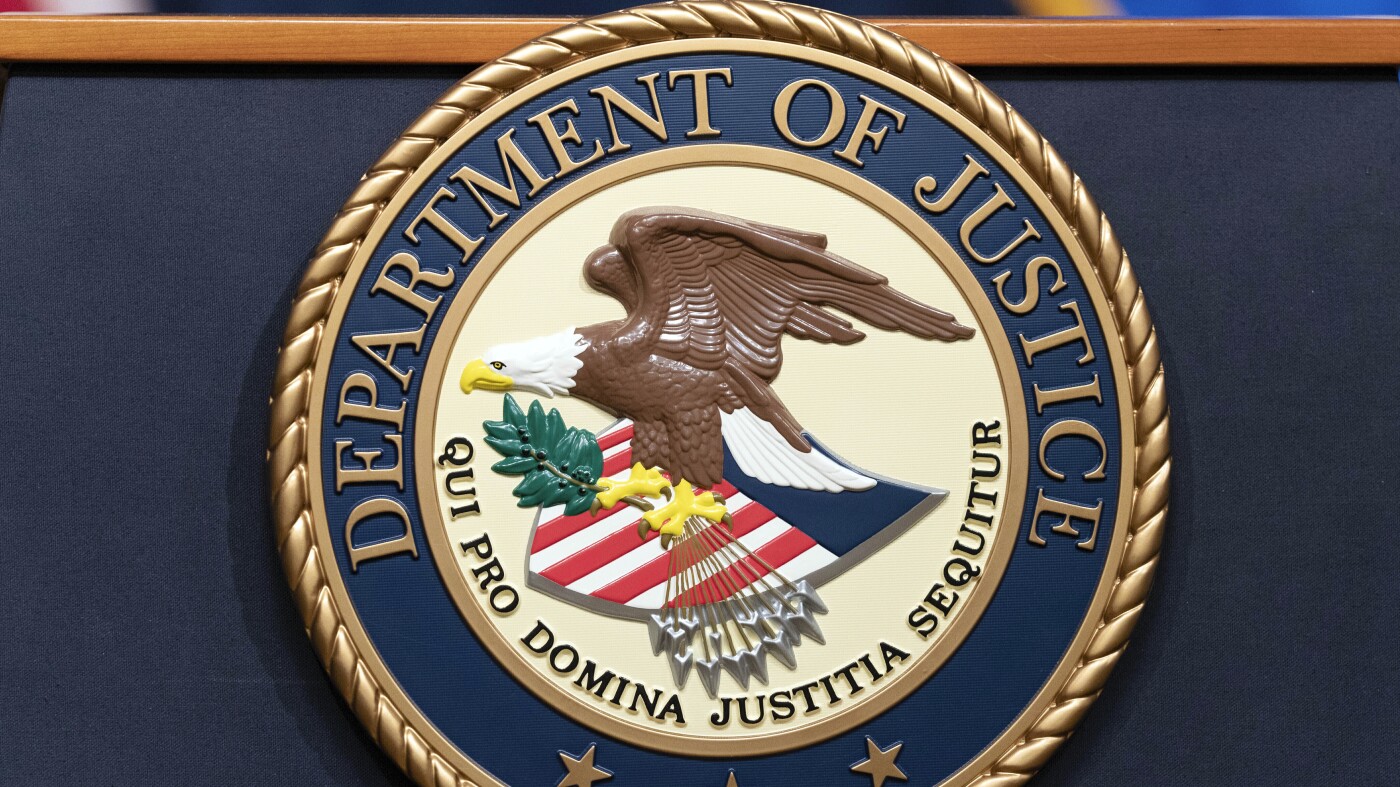Maryland
Can Maryland keep up in the Big Ten? Inside the Terps’ quest for consistent success

As the 2001 defensive player of the year in the state of Maryland, Shawne Merriman received scholarship offers from the likes of Florida State and Notre Dame. But the Upper Marlboro native did not take visits to any of them, instead signing with his home-state school to team up with other players from the area.
“I’m like, man, if we all stayed here, we could go up against Florida, Texas, Georgia, anywhere,” said the former All-Pro linebacker for the San Diego Chargers. “I wanted to jumpstart that, and a lot of guys did. They stayed home.”
Indeed, under coach Ralph Friedgen the Terrapins posted three consecutive seasons of 10-plus wins from 2001-03, including an ACC championship and Orange Bowl trip in 2001. Over the ensuing years, the program churned out NFL stars like Merriman, tight end Vernon Davis, cornerback Dominique Foxworth and receivers Torrey Smith and Darrius Heyward-Bay — all natives of the DMV (D.C./Maryland/Northern Virginia) area.
But Friedgen’s initial success proved fleeting, much like the program’s other brief eras of glory.
“There’s a lot of history here, and it seems to have gone in spurts over the decades,” said Kevin Glover, Maryland’s All-American center in 1984 who’s now director of player development for the program.
The Terps’ current head coach, Mike Locksley, remembers those eras, too. While the Terps won three consecutive ACC championships from 1983-85, Locksley, a high-schooler at the time, caught the Metro to College Park on Saturdays to sell tickets in the parking lot of Byrd Stadium.
“I made a lot of money off of Maryland football in the mid-’80s,” Locksley said. “With them winning the way they were winning, that was a great ticket, and a tough ticket, to get.”
Growing up in Washington, D.C., Locksley watched a Terps team that was well-respected among fans and competed against the nation’s top programs.
“They were one of the power teams, not just on the East Coast, but in the country, and had great success with winning championships and churning out NFL players,” Locksley said. “I had a lot of respect and grew up as not just a local, but a local fan of everything Maryland. They were our hometown team.”
Now, Maryland football follows a different narrative. A move to the Big Ten in 2014 left fans indifferent and put the program on an island against opponents rooted in tradition.
“This is hypothetical, but if they were still (in the ACC), they would probably win championship after championship,” said Johnny Holliday, the radio voice of the Terrapins since 1979. “I don’t think the ACC matches up in any way with the toughness of the Big Ten.”
Fan attendance is sparse amid the D.C. area’s professional sports market, and the Terps have produced just seven winning seasons in the past 19 years. Locksley says Maryland football was “left for dead” when he took over in 2019.
The Terps posted winning records in 2021 and 2022, but they have yet to finish above .500 in Big Ten play. The changing landscape of college football with name, image and likeness and the transfer portal has made it increasingly difficult to capitalize.
“I don’t see any reason why Maryland can’t compete with Penn State and Michigan,” Friedgen said. “They’ve got all the things those places have, and maybe more with where they’re located. If they have the same academic requirements, I don’t see why they can’t do that.”
Ralph Friedgen went 75-50 as head coach at Maryland from 2001-10. (Jamie Squire / Getty Images)
Maryland has reached the pinnacle of college football before — but it was 70 years ago.
From 1951-55 under Jim Tatum, Maryland had four top-10 teams, including its lone consensus national championship in 1953. But when Tatum left for North Carolina following the 1955 Orange Bowl season, the program went 18 years before its next ranked finish.
Friedgen, then a high-school quarterback from Harrison, N.Y., arrived in College Park in the mid-’60s amid a particularly woeful period. Maryland suffered seven consecutive losing seasons and cycled through five head coaches from 1965-72. After playing his final season, Friedgen spent three years as a graduate assistant.
“The perception there was that Maryland could challenge for the ACC championship,” Friedgen said.
Jerry Claiborne did just that, winning three consecutive league titles from 1974-76 and producing five top-20 teams over 10 years before leaving for his alma mater, Kentucky. That opened the door for the most entertaining era in Maryland football history, when the school hired Bobby Ross from the Kansas City Chiefs to run a pro-style passing offense. Friedgen, then at Murray State, returned to be his OC.
“When Bobby offered me the job, I called coach Claiborne, and he thought he only had one quarterback: Stan Gelbaugh,” Friedgen said. “When I get there, I see Boomer Esiason, Stan Gelbaugh and Frank Reich. I’m like, ‘What the hell is he talking about?’”
Behind those QBs — all of whom played in the NFL, with Esiason earning an MVP award with the Cincinnati Bengals — Maryland captured three consecutive ACC championships. In the Terps’ signature game in 1984, Reich replaced Gelbaugh at halftime against reigning national champion Miami and led them back from a 31-0 deficit to win 42-40. At the time it was the largest comeback in NCAA history.
“We had the president on (the air) at halftime and I said, ‘What do you think?’” Holliday said. “And he said, ‘Well, we’re going to come back and win this game.’ I said, ‘It’s 31-nothing, what are they serving you out there as far as beverages outside? I’ll be darned if they didn’t.”
Seizing the momentum, Maryland averaged a program-record 49,385 home spectators in 1985.
“At the time there was no upper deck, so they would bring in temporary stands and put them along the concourse up top, and in the back of the end zone,” Glover said. “It was a special atmosphere back in those days.”
“And then,” said Friedgen, “Len Bias happened. And Maryland was shot for a long time.”
Bias, a revered Maryland basketball star, died from a cocaine overdose two days after being selected No. 2 overall in the 1986 NBA Draft by the Boston Celtics. He had been partying in a dorm room with teammates. The high-profile tragedy unleashed a reckoning for all of Maryland athletics, with the university drastically reducing the number of special admissions it allowed and establishing a higher minimum GPA than the NCAA’s.
“Bobby was upset over it because he felt that we had done nothing wrong, and yet, they were treating us like we were part of the basketball team,” Friedgen said.
Ross left for Georgia Tech after the ’86 season, and Friedgen went with him. The Terps reached just one bowl game over the next 14 years. But in 2001, Friedgen returned to Maryland for the third time, now as the head coach. He immediately led the program to 10 wins and its first ACC title in 16 years. By 2003, average attendance surpassed 50,000 per game for the first time in school history.
“We were tough as nails, man,” said Merriman, a first-round pick in the 2005 draft. “I was seeing Vernon Davis every single day in practice, (All-ACC) Stephon Heyer at left tackle, (All-ACC) C.J. Brooks at guard, with (ACC Offensive Player of the Year) Bruce Perry in the backfield. It was such a competition at practice that by the time you got to the game, you were like, hell, this is easy.”
But despite sending nearly 40 players to the NFL by the end of the decade, Friedgen, who was recently named to this year’s College Football Hall of Fame ballot, did not reach the same heights over the rest of his 10-year tenure. AD Debbie Yow had a succession plan in mind. In 2009, she named offensive coordinator James Franklin as head coach in waiting. When Franklin left for Vanderbilt the following year, new AD Kevin Anderson ousted Friedgen.
His replacement, UConn’s Randy Edsall, went just 10-24 in conference play in his four-plus seasons — while playing in two conferences.
In late November 2012, Maryland’s board of regents accepted an invitation to join the Big Ten beginning in the 2014-15 academic year. The ACC charter member’s stunning decision was driven by a mounting athletic department deficit that had caused Maryland to cut seven varsity sports.
“Today is a watershed moment for the University of Maryland,” said then-university president Wallace Loh, adding that the move would “ensure the financial vitality of Maryland Athletics for decades to come.”
Many Maryland fans, though, were displeased, especially by the thought of leaving behind treasured men’s basketball rivalries against bluebloods Duke and North Carolina.
“My initial feeling, and I think a lot of fans were the same way, was, ‘You’ve got to be kidding me,’” Holliday said. “The first couple of years, there was a lot of resentment and a lot of question marks: Why did you do this? Why did you do that?”

GO DEEPER
Maryland’s Big Ten bet: The pitfalls of a basketball school making a football decision
In its first Big Ten football season, Maryland was 4-4 in conference play and finished third in the East Division behind two top-five teams in Ohio State and Michigan State. The Terps beat Penn State and Michigan on the road and went to a bowl game. Locksley, then Maryland’s offensive coordinator, said there was no feeling of a “rebuild” at the time. The trouble came afterward.
The next season, Maryland fired Edsall after a 2-4 start. With Locksley as the interim coach, the Terps finished 3-9 (1-7 in Big Ten), marking the beginning of yet another tumultuous period. For the next seven years, Maryland won no more than three conference games in a season. Against Big Ten powers Penn State, Ohio State and Michigan, the Terps have a 3-22 record (two of those coming in 2014) with an average point differential of -27.7.
“I think what we found was from a sustainability standpoint, it was almost like we were a program that moved into the richest neighborhood and bought the smallest house in that neighborhood,” Locksley said. “We needed to figure out how to compete and live amongst programs that have great tradition.”
While most Big Ten teams had already established their deep in-conference rivals, Maryland became attached to its realignment partner Rutgers. In the Big Ten’s new scheduling model, the Terps’ only protected opponent is the Scarlet Knights, even though last year’s game between the two, which was also senior day at SECU Stadium, drew a season-low 21,974 fans.
“It’s just not a rivalry,” Holliday said. “I don’t think, anyhow.”

Maryland and Rutgers are protected opponents on the new Big Ten schedule. (Brent Skeen / USA Today)
Without listing specific numbers, athletics director Damon Evans said season ticket sales “have dwindled” each season since 2014. Evans attributes the decline to “not having the natural rivals that we’ve had in the ACC. And obviously, winning has a lot to do with that as well.”
In their final ACC season, the Terps’ average home attendance was 41,278. In 2022, the Terps drew an average of 31,934, their lowest mark since joining the Big Ten, despite notching eight wins for the first time in 12 years.
The empty seats irk former Terps and Baltimore Ravens receiver Torrey Smith, who purchased his own suite in the stadium.
“Our fans aren’t showing up,” said the two-time Super Bowl champion. “And I know that’s a reason why some recruits aren’t big on staying at home, because when you go to these other places, the game-day atmosphere is completely different, and they look forward to that.”
Still, Smith believes the Big Ten move was the right one. The ACC has been in the midst of an unequal revenue sharing debate for months now, and seven schools are exploring ways to leave the conference.
“I wasn’t a fan (of the Big Ten move), to the point that the school probably absolutely hated everything I was saying,” Smith said, “but, you know — the school was right. … You fast forward to now and the ACC is almost irrelevant.”

GO DEEPER
ACC realignment rumblings: How airtight is grant of rights?
The Big Ten’s reported $8 billion TV deal starting later this year makes it the top-earning conference in college sports. USC and UCLA will join in 2024, further expanding its footprint. Smith, and many others, acknowledge the Big Ten move was unavoidable, but matching the competition is still a challenge.
“Do I think we can compete for Big Ten championships at Maryland? Yes, I think it’s possible,” Evans said. “I do believe that it’s a little bit more of an uphill climb for us because we’re not ready-made as some of the other programs already established but I like the progress that we’ve made.
“I also understand this is going to be challenging to get to the mountaintop in the Big Ten in football.”
And, at times, those challenges have extended beyond the field.
When Locksley returned as head coach in 2019, he took over a program still reeling from the previous summer’s tragic death of offensive lineman Jordan McNair, resulting from an offseason workout. A subsequent investigation into the program’s alleged “toxic culture” had led to predecessor D.J. Durkin’s dismissal.
Locksley was a respected figure among Maryland fans and high-school coaches in the DMV. As Nick Saban’s top recruiter, he helped Alabama sign three of the top-four recruits in the state of Maryland in its 2019 class. His first big get for the Terps was five-star 2020 WR Rakim Jarrett from Washington, D.C. Meanwhile, former four-star quarterback Taulia Tagovailoa, younger brother of Tua, followed Locksley from Alabama.
But that recruiting momentum quickly stalled. The Terps have signed just six of 48 four- and five-star recruits from Maryland in the past four cycles. Locksley’s 2021 class ranked 18th nationally in the 247Sports Composite, but the past two have finished in the 30s.
“I feel like I’ve got my legs cut from underneath me,” Locksley said. “Because my strength in recruiting isn’t some slick salesman job, it’s built on the longevity of relationships. And now the way the college landscape is with the NIL, the transfer portal — everything is pretty much transactional, and relationships have kind of gone out of the window.”
Maryland has an NIL collective, The Best is Ahead Foundation, led by one of Locksley’s former Towson teammates, Dan Crowley.
“I want to see Mike Locksley have the resources to compete for a Big Ten championship,” Crowley said. “I’ve seen numbers on social media from Michigan, Penn State, Ohio State. … Our numbers are less than theirs from what I’m reading, (but) I don’t know that we need to compete dollar for dollar with some of these schools.”
The Terps just last year moved into a sparkling new $149 million football facility, Jones-Hill House, but perhaps that money may have been better spent on NIL deals for the players.
“Unfortunately, we moved in at a time when facilities have been de-emphasized in a recruit’s mind,” Locksley said. “Because they’d get dressed in the trash can for $25,000.”
When Tagovailoa reflects on his team’s 2022 season, he thinks most about the one that got away.
Hosting No. 2 Ohio State in College Park in late November, Maryland led the undefeated Buckeyes at halftime 13-10. Tagovailoa’s 49-yard-pass downfield, which made him the program leader in career passing yards, put the Terps in scoring position in the fourth quarter. A successful fourth-and-goal attempt brought the Terps back within three points with 9:49 remaining.
Maryland went on to lose 43-30, the outcome sealed on a last-second strip-sack of Tagovailoa that Ohio State’s Steele Chambers ran into the end zone.
“We feel like we match up good with every team we play and it’s just the little things, the disciplinary things that we need to continue to fix,” Tagovailoa said. “Especially on my part with taking care of the football, understanding the down and distance and being good at situational football. Those are the things that it came down to.
“We just can’t wait for the next opportunity that we get to play those big teams.”
After beating No. 23 NC State in the Duke’s Mayo Bowl to seal an 8-5 season, Tagovailoa, a fifth-year senior, announced he would return for what will be the program’s most anticipated season in recent memory.
“Anytime you’ve got a quarterback, you’ve got a chance,” Locksley said. “And we got a quarterback.”
The Maryland record holder in every major career and single-season passing category
But there’s more to do 🐢🐐 pic.twitter.com/8AS530cAHl
— Maryland Football (@TerpsFootball) January 18, 2023
Tagovailoa’s return keeps a constant amid internal shuffle. Spring ball was a “learning experience,” Jones said, as the Terps worked to integrate new OC Josh Gattis’ playbook. Gattis, the 2021 Broyles Award winner at Michigan, replaced Dan Enos, who left for the same role at Arkansas. He previously worked with Locksley at Alabama.
“There’s nothing like these last two years as a launching pad to what the future holds,” Holliday said. “Every school would love to have a team win the conference championship; it’s pretty tough in the Big Ten. Every fan base wants to see their team go to a bowl game, well we’ve done that in back-to-back years. It’s been a long time since that’s happened.”
A third consecutive winning season in 2023 would mark the Terps’ most consistent run since the early 2000s under Friedgen. As the Terps have learned, it’s not an easy task. The offense lost some key receiving yards with the departures of receivers Jarrett and Jacob Copeland and tight end CJ Dippre. Still, Jones, the top receiver in 2022, and leading rusher Roman Hemby (1,010 yards on 188 attempts) return.
But one season can easily prove to be a flash in the pan, given Maryland’s history. Longevity is key. And if the program can prove sustainable, where will it be five years from now?
“A powerhouse,” said Merriman. “No question about it.”
Editor’s note: This is part of a series of stories examining the 2023 college football season’s most intriguing programs. Which teams are primed to break out? Struggling to find consistency? What’s gone right — or wrong — and what comes next? More recent stories in this series:
(Top illustration: Samuel Richardson / The Athletic; photos: Matthew O’Haren, Bob Donnan, Tommy Gilligan / USA Today)

Maryland
How to watch Michigan State vs. Maryland (9/7/24): TV channel, kickoff time, live stream
Michigan State got the job done in its season opener, but it wasn’t pretty as it hung on at home against Florida Atlantic. Now, it has to head on the road to open Big Ten play in what promises to be a tougher test.
· Watch the Michigan State Spartans on FuboTV (free trial)
· Watch the Michigan State Spartans on Sling
· Watch the Michigan State Spartans on DirecTV Stream
· Visit MLive’s Betting Home for latest odds & sportsbook promos
Michigan State is 1-0, but the road gets tougher now. The Spartans go on the road and start Big Ten play early in Week 2 with a trip to Maryland. The Terrapins have a new look this year without quarterback Taulia Tagovailoa but looked strong in their season-opener against Howard last week.
· Who: Michigan State at Maryland
· When: 3:30 p.m.
· Where: SECU Stadium, College Park, Maryland
· Twitter: Follow Matt Wenzel
· Live updates: Beginning at 2:30 p.m. at mlive.com/spartans
· Latest line: Maryland -9.5
TV Network: Big Ten Network
Streaming options:
· FuboTV is offering $30 off the first month for all U.S. plans. Sign up to get your favorite TV shows, live sports events, and much more
· Sling currently has an offer of $20 for the first month of subscription and has streaming coverage of live sports, news and entertainment.
· DirecTV Stream offers live sports, news and on demand TV.
Five must-reads before kickoff:
* Michigan State lost two members of its secondary, Dillon Tatum and Khalil Majeed, to long-term injuries in its season opener. The team is turning to some new faces to fill in the holes from those injuries.
* Alex VanSumeren was once Michigan State’s top-rated recruit, but he’s been seldom seen on the field due to injuries. Now, though, he’s healthy and making his mark on the Spartans’ defensive line.
* Aidan Chiles’ 10-completion, two-interception performance in Michigan State’s season-opener was his “floor,” according to offensive coordinator Brian Lindgren, who has a plan to improve the quarterback’s performance going forward.
* Jonathan Smith had a name for Week 1 in college football: overreaction Saturday. He’s cautioning fans not to put too much stock into an opening performance that likely underwhelmed many.
* The run game and discipline are two of Matt Wenzel’s five things to watch in this week’s matchup.
Michigan State
* Passing: Aidan Chiles 10-14, 114 yards, 0 TD, 2 INT
* Rushing: Kay’ron Lynch-Adams 9 rush, 101 yards, 1 TD
* Receiving: Michael Masunas 2 rec., 29 yards, 0 TD
* Tackles: Angelo Grose 12
* Sacks: Khris Bogle 1.5
* Interceptions: Grose, Nikai Martinez 1
Maryland
* Passing: Billy Edwards Jr. 20-27, 311 yards, 2 TD, 0 INT
* Rushing: Roman Hemby 14 rush, 66 yards, 1 TD
* Receiving: Tai Felton 7 rec., 178 yards, 2 TD
* Tackles: Glendon Miller 6
* Sacks: None
* Interceptions: Ruben Hyppolite II, Miller 1
Friday, Sept. 6
Western Illinois at Indiana
Duke at Northwestern
Saturday, Sept. 7
Texas at Michigan, noon (FOX)
Rhode Island at Minnesota, noon (Peacock)
Bowling Green at Penn State, noon (BTN)
Akron at Rutgers, noon (BTN)
Iowa State at Iowa, 3:30 p.m. (CBS)
Michigan State at Maryland, 3:30 p.m. (BTN)
Eastern Michigan at Washington, 3:30 p.m. (BTN)
South Dakota at Wisconsin, 3:30 p.m. (FS1)
Kansas at Illinois, 7 p.m. (FS1)
Colorado at Nebraska, 7:30 p.m. (NBC)
Western Michigan at Ohio State, 7:30 p.m. (BTN)
Boise State at Oregon, 10 p.m. (Peacock)
Maryland
Pre-Snap Read: Michigan State vs Maryland

COLLEGE PARK, Md. – Michigan State has an excellent chance to make a strong statement this weekend that the rebuilding job under new head coach Jonathan Smith is ahead of schedule, if the Spartans can take down 8-point favorite Maryland on Saturday.
A Michigan State victory would be a strong statement within the football industry, but maybe not as strong from a fan perspective. I’m not sure Maryland’s football brand is as respected in the state of Michigan and regionally as it should be, for a program that has gone 8-5 in the past two seasons and defeated Auburn and North Carolina State in bowl games the past two years.
Maryland is good. The Terrapins are coming off a 50-7 victory over a weak UConn team last week. Maryland’s offense looked very good against a weak, soft, conservative UConn defense.
Michigan State’s defense was ahead of schedule last week against a mediocre Florida Atlantic offense. Michigan State’s offense was behind schedule, experiencing inconsistent accuracy and decision-making at the quarterback position, which was somewhat understandable considering it was sophomore Aidan Chiles’ first start as a college player. MSU’s running game also lacked consistency, especially in short yardage and in the red zone.
The big news from Maryland last week in my opinion was the excellent play of new starting quarterback Billy Edwards. The 6-foot-3, 222-pound redshirt-junior had waited behind the outgoing, record-breaking Taulia Tagovailoa for three years. Tagovailoa left Maryland as the Big Ten’s all-time passing leader. He went undrafted and is now playing in the CFL.
Edwards looked good last week. He’s strong in the pocket, is a physical ball carrier on designed runs or scrambles. He was accurate over the middle on intermediate routes, and seemed to do a good job processing coverages, although UConn’s coverages were simple, slow and soft.
I saw this Michigan State vs Maryland game as a swing game on the schedule prior to the season. But considering how well Edwards and his receivers looked last week, and Michigan State’s sputtering start on offense, this game goes from being a swing game to uphill slog for the Spartans.
Maryland
Student shot in Joppatowne, Maryland high school

One teen shot another during a dispute in a Maryland high school bathroom Friday in what authorities called an isolated incident.
The victim, a 15-year-old student at Joppatowne High School, was in serious condition after being airlifted to a hospital, the Harford County Public Schools said in a news release, citing information it received from the county sheriff’s department.
A 16-year-old student whom police identified as the shooter fled shortly afterward but was caught minutes later nearby, according to the news release. Officials said no information would be released immediately about the weapon, which had not been recovered.
The state’s attorney has said the suspect will be charged, the release said, citing Harford County Sheriff Jeff Gahler.
Shortly after the shooting, the sheriff’s office asked people to avoid the area, but emphasized that the confrontation was an “isolated incident, not an active shooter.” A parent-student reunification center was established at a nearby church. More than 100 personnel responded to the high school about 20 miles (32 kilometers) northeast of Baltimore, Gahler said.
The fight happened two days after a shooter whom authorities identified as a 14-year-old student killed four people at a high school outside Atlanta. Wednesday’s attack renewed debate about safe storage laws for guns and had parents wondering how to talk to their children about school shootings and trauma.
-

 World1 week ago
World1 week agoSwiss court convicts two executives of embezzling $1.8bn from 1MDB
-

 News1 week ago
News1 week agoAfter months on the run, a murder suspect falls through the ceiling and into custody
-

 World1 week ago
World1 week agoEconomic portfolios are key in talks to chose new EU commissioners
-

 Movie Reviews1 week ago
Movie Reviews1 week agoSaripodhaa Sanivaaram Movie Review Rating
-

 News1 week ago
News1 week agoHarris kicks off Georgia tour as Trump posts grievances on social media
-

 Politics1 week ago
Politics1 week agoTim Walz attempts to court firefighters during speech at Boston convention: 'We'll have your back'
-

 Politics7 days ago
Politics7 days agoTrump impersonates Elon Musk talking about rockets: ‘I’m doing a new stainless steel hub’
-

 World1 week ago
World1 week agoBrussels, my love? Is France becoming the sick man of Europe?




















